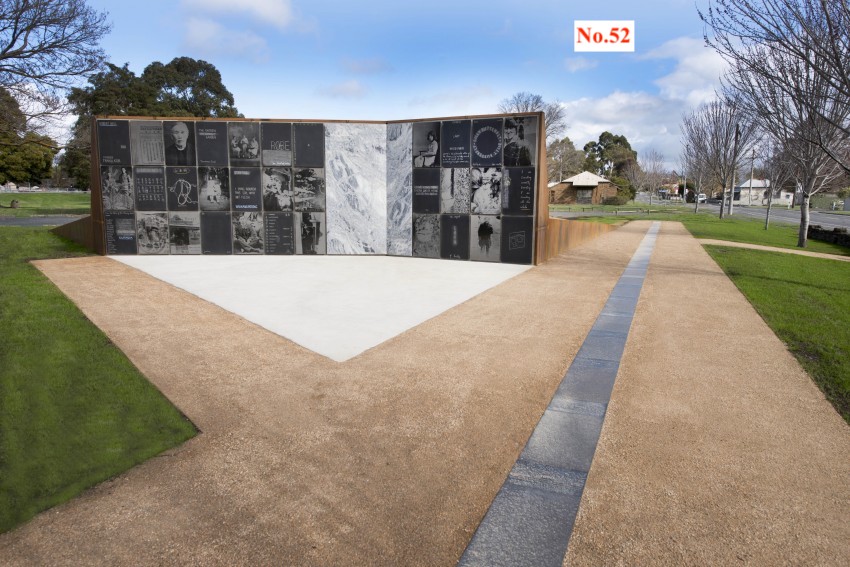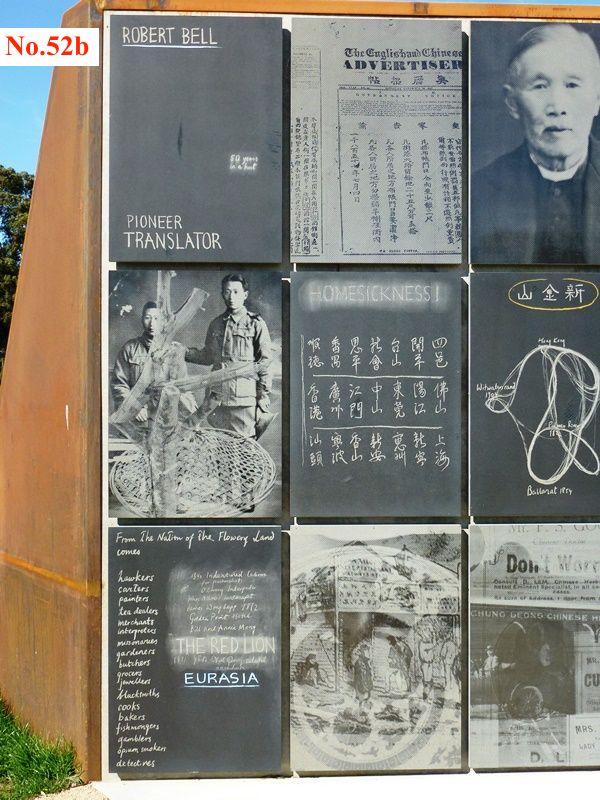
The early years of the 21st century has seen a number of memorials relating to Chinese Australian history (for examples see No.43, No.47 & No.50). Some commemorate individuals such as Billy Sing or Quong Tart, and some events such as the Robe Walk or the Lambing Flat Riots. The Open Monument at Ballarat is interesting in that it both celebrates a community in general and leaves “open” the addition of further memorialisation as history and perspectives march on.
Created by John Young and dedicated in September 2015 the monument was commissioned by the City of Ballarat to acknowledge the “History of the Chinese in Ballarat”. The “open” aspect of the memorial is an interesting effort to bypass an inherent flaw in any monument (or history for that matter). Namely, the freezing of history, and more importantly the perception of history, into the shape that happens to be favoured at the time and by the sponsors of the monument when it was paid for. Only time will tell what additions will be made to this history of the Chinese in Ballarat.
This focus on the changing nature of historical perception and the dangers of history cast in stone (the material most favoured by memorial makers) raises the question of just what kind of history is being commemorated here. The memorial itself provides a clue in its many images of Chinese people and activities, including Chinese text. Visually it is hard to miss that the intention is to emphasise that there were lots of Chinese doing lots of things in Ballarat. But what was Ballarat doing at the time? The absence of non-Chinese in the memorial perhaps creates a parallel history rather than a history of the Chinese in Ballarat.

This consideration is not meant as a cheap criticism of the memorial itself but rather the intention is to suggest something about the nature of the field that is Chinese Australian history. Australia’s racist history, compounded by a whitewashed version of that history which still dominates, means that much that passes for Chinese Australian history is actually an effort to reverse engineer stereotypes. Very often the result is the building of a parallel history that only rarely seeks to engage with general Australian history except when it comes to discriminatory laws or racist actions.
Of course, this is an inevitable paradox of striving to highlight a suppressed or hidden history. The other side of this is that with more emphasis on integration and engagement the more general the history becomes leading to the Chinese element becoming as distinct as say, the Welsh in Australia. But history is always about perspectives and like the lady and the vase it is not very easy to see both at the same time. ANZAC history is not doubted to be part of Australian history yet much of Australian history has nothing to do with war let alone ANZACs. Can Chinese Australian history be seen in the same light? Should it be?
The danger is that despite the obviously long history of Chinese Australians in Ballarat and elsewhere the “Chinese” as such are seen as forever migrants or worse “victims” and the arrival of more people of Chinese heritage as a continual “influx”. This is not the case for say Greek migrants. But what if Greece were a global superpower?

